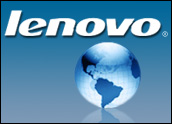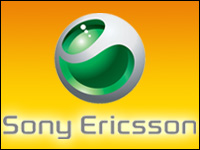
Chinese PC maker Lenovo will cut 2,500 jobs, or about 11 percent of its workforce, during the first quarter, the company said Wednesday.
The cuts will include management and executive positions. In addition, Lenovo will cut executive compensation by 30 percent to 50 percent, and trim bonuses.
Lenovo will also consolidate its China and Asia Pacific operations, which are currently run as separate business units, into a single business unit — Asia Pacific and Russia, or APR.
APR will be run by Chen Shaopeng, currently a senior vice president at Lenovo and president of its Greater China unit. An apparent casualty of the restructuring, SVP David Miller, current president of the company’s Asia Pacific unit, will stay on through the transition period before leaving Lenovo.
Call Center Move
Lenovo will move its main call center operations from Toronto to Morrisville, N.C., the company’s main site in North America. Yet another executive loss due to the restructuring is Scott DiValerio, senior vice president of the Americas Group sales organization.
Lenovo expects to save US$300 million as a result of the restructuring in the fiscal year ending March 31, 2010, and take a $150 million restructuring charge in the fourth fiscal quarter.
Lenovo’s stock was hammered by the announcements, plummeting nearly 26 percent to $1.91 per share in mid-day trading Thursday in Hong Kong.
Recession Strikes Again
Like many companies in the technology sector, Lenovo’s decision to slash employees is a response to the global recession, said Rob Enderle, principal analyst at the Enderle Group.
“You’re going to see this behavior across the entire segment,” Enderle told the E-Commerce Times. “Companies are going to try and stay ahead of the curve and bring costs in line with revenues.”
However, Lenovo’s decision to cut executive compensation is unusual, he said.
“The CEO is sharing the pain,” Enderle said. “A 30 percent to 50 percent salary decrease is almost unheard of. I think the company can be credited for engaging in something that is a much better practice than what we’ve seen in the past.”
The falloff in spending by banks and other financial institutions has hit Lenovo and other PC makers hard, he said.
Can’t Crack Consumer Market
Lenovo’s troubles are exacerbated by its inability to establish a foothold in the consumer market overseas and in the U.S., said Gartner analyst Mikako Kitigawa.
The company bought into the U.S. market when it acquired IBM’s struggling PC and laptop business for $1.25 billion in 2005. Big Blue’s PC business and brand has resonated strongly with corporate customers for years, but its appeal to consumers waned long before Lenovo bought the unit.
“[Lenovo] tried to use its position as a major sponsor of the Beijing Olympics to establish some kind of brand name in the U.S. and other mature markets, but it wasn’t really successful,” Kitigawa told the E-Commerce Times.
At the same time, the consumer side of the business in the U.S. has come under severe price pressure from low-cost PCs like netbooks, she said.
“Systems that would usually sell for $699 have to go down to $599,” Kitigawa noted. “There are already too many PC brands at the retail stores. At this point, I don’t know if it’s a good idea for Lenovo to stay in the consumer market because the profit margins are extremely thin.”
Recovery May Come Later in 2009
Lenovo isn’t the only PC maker struggling with the downturn in corporate and consumer demand for its products. HP, IBM, Dell and even Apple are all trading well below their 52-week highs due to weakness in the PC business.
“We saw a significant decline in Q3 [PC sales] and we’re expecting to see even worse numbers in Q4,” Kitigawa said.
However, the sector could begin to recover some time in the second half of 2009 with the advent of President-elect Barack Obama’s planned economic stimulus package. Part of that package calls for an increase in new and better PCs in public schools, as well as an upgrade of IT infrastructure in the federal government, Enderle said.





















































Social Media
See all Social Media